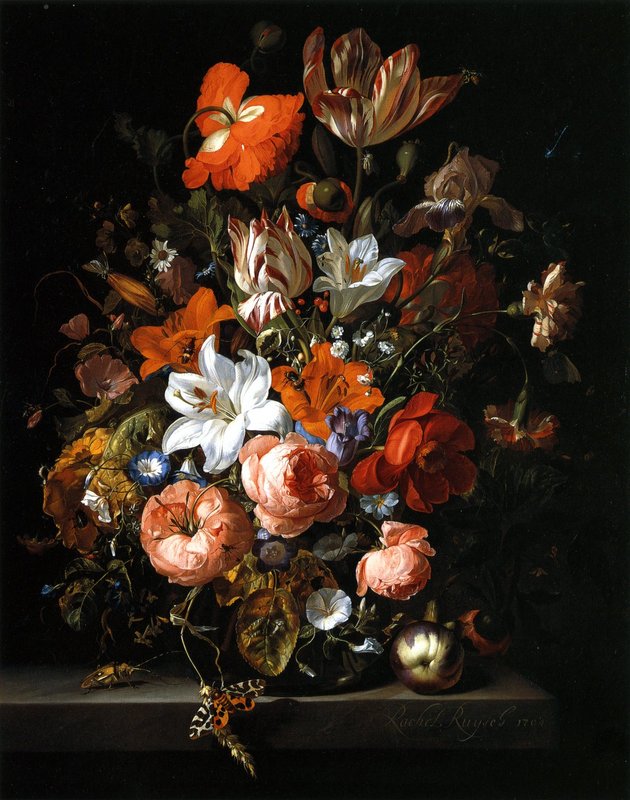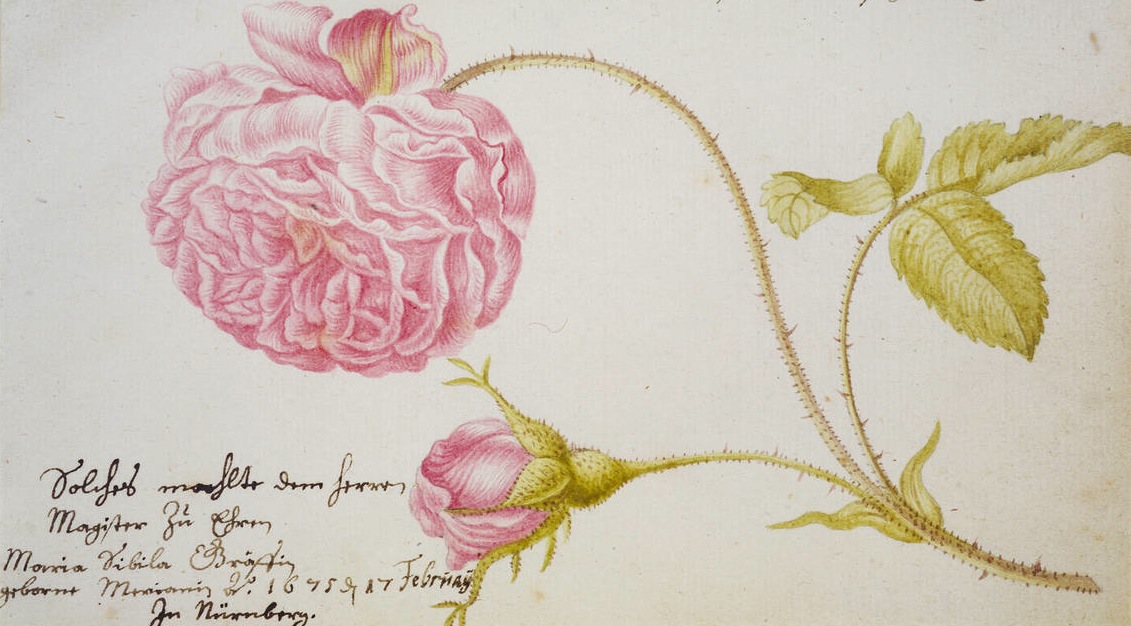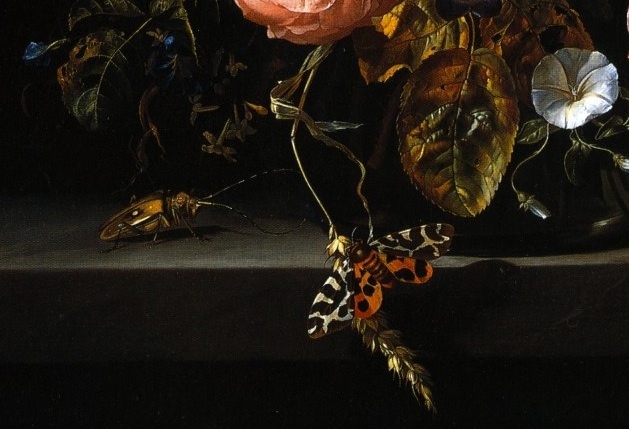Flowers in a Glass Vase

Rachel Ruysch, Flowers in a Glass Vase, 1704. Oil on canvas, 83 x 66 cm. City of Detroit Purchase with gift of funds by various donors.
Flowers in a Glass Vase, is a tour de force in Ruysch’s oeuvre, and it exhibits her talents at the height of her career. The sweet, intoxicating smell of budding flowers fills the viewer’s nose. Butterflies, beetles, and other insects buzz and flitter from flower to flower and bud to bud. Some seem on the hunt for the sweetest pollen, while others sit quietly on the petals and leaves of the bouquet, their antenna sporadically moving in various directions to maintain an awareness of their surroundings. The bouquet’s energetic curves and bends, as well as its elaborate, overlapping layers, complicate the viewer’s ability to decipher a single point of entry into Ruysch’s crowded composition. The sheer number of flower varietals, their range of sizes and shapes, and their diverse colors overwhelm the viewer’s imagination and intimate a tremendous level of botanical knowledge. Against the dark, shadowy background of the painting, the flowers’ colors brighten and intensify. The brilliant orange and white lilies immediately arrest the viewer’s attention at the center. From here, the viewer notices the three, soft pink cabbage roses that form a subtle arc near the base of the bouquet. The subtle shadows that fill the narrow crevices of their silky petals verify their three-dimensionality, and “the dewdrops imply that these were freshly cut at the peak of their fragile beauty” (note 1). To further emphasize this dimensionality, Ruysch included three distinct views of their bulbous bud, one from the back, front, and side. Near the bottom left of the canvas, Ruysch extended the piece of wheat beyond the table’s ledge (see detail), creating a vase of flowers that exists within the viewer’s world, rather than simply within the confines of a brocade, four-sided picture frame. More than purely an extension into the viewer’s space, this wheat stalk satisfies a much greater role, providing a point of entry into the ostensibly cluttered and intimidating bouquet of flowers. Atop the stem of wheat rests a beautiful, spotted butterfly, and it, too, invites the viewer to enter into the arrangement with unabashed confidence and curiosity.
In Still-Life Paintings from the Netherlands, Alan Chong writes about the function of the accessory objects in flowers paintings. He contends that: “Insects, worms and snails are almost ubiquitous accessories in still lifes, especially flower pieces, and seem to act as observers and onlookers. In environments usually devoid of human participants, they are surrogates for viewers, exploring the interstices of bouquets, feeling the surfaces of the various materials, and viewing objects from different viewpoints” (note 2). Chong’s claims strongly resonate with Ruysch’s Flowers in a Glass Vase. In a demonstration of her refined technical proficiencies and cultured intellectual prowess, Ruysch places the small insects throughout her work, perched softly on the flowers’ petals and stems. In the bottom left corner of the canvas, she even includes a golden longhorn beetle hovering beneath a canopy of withered green leaves and small blue buds. His antennas move about rhythmically to detect what lies ahead. Finding all of the small insects that crawl in and out of the bouquet’s many layers proves to be a daunting task, but nevertheless one that can be enjoyable with an open and curious mind. Many insects are hardly visible, their colors camouflaged against the vibrant petals beneath them. Some sit in the shadows, quietly contemplating their next move. To be sure, Ruysch’s inclusion of such a wide variety of insects reveals a proficient knowledge cultivated through the consultation of encyclopedic treatises and resources books written about insects by individuals such as Thomas Moffet and Johannes Swammerdam. This knowledge also resulted from the fact that Ruysch was the daughter of Frederik Ruysch, an anatomist and botanist who collected a remarkable amount of natural curiosities. Consequently, she was exposed to the natural world beginning at an early age (note 3). In the end, the insects only serve as one vehicle that the viewer can use to navigate through the depths of Ruysch’s rich composition.
Notes:
note 1. Keyes, George S. Masters of Dutch Painting: Detroit Institute of Arts. Detroit: Detroit Institute of Arts, in Association with D Giles, London, 2004. 212. Print.
note 2. Chong, Alan, W. Th. Kloek, and Celeste Brusati. Still-Life Paintings from the Netherlands, 1550-1720. Zwolle: Waanders, 1999. 28. Print.
note 3. note 1. Keyes, George S. Masters of Dutch Painting: Detroit Institute of Arts. Detroit: Detroit Institute of Arts, in Association with D Giles, London, 2004. 212. Print.

